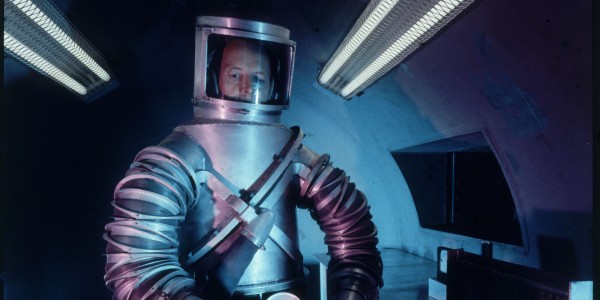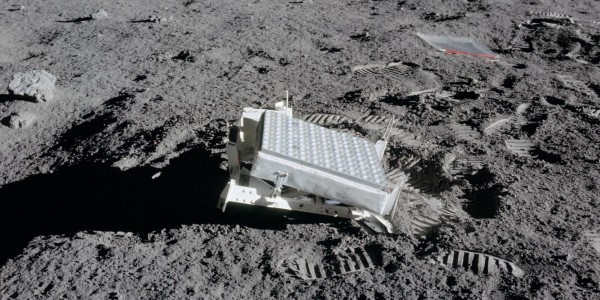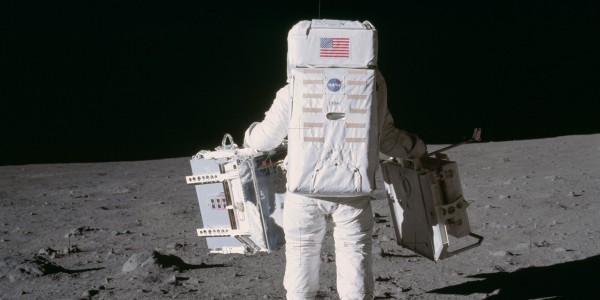One of the greatest innovations in medical technology wasn’t invented by NASA, although NASA did contribute significantly to its advancement. The algorithms used to create images of the body’s internal organs originated from processes that NASA developed in order to enhance pictures taken of the moon’s surface. NASA has been working on digital image processing since the 1960s to evaluate images taken by probes and satellites. This technology enabled the development of MRI and the related computed tomography (CT) scan. Today, many smartphone cameras include digital image processing in the factory settings.
Space Innovations








Magnetic resonance imaging (MRI)
One of the greatest innovations in medical technology – not invented by NASA, although NASA did contribute significantly to its advancement.

GPS – satellite navigation
GPS (Global Positioning System) works because we have satellites in space.

Anyone under 20 years old might take navigating by smartphone - and the fact that it is free, easy, and always available - for granted. But they shouldn’t. GPS (Global Positioning System) works because we have satellites in space. It takes four satellites to answer a single map query: three for the position and one for the time. The receiver - usually a smartphone - calculates position and even direction and speed of travel based on how long it takes signals from the different satellites to travel to the receiver. The United States’ GPS is not the only satellite navigation system. Russia and China each have their own system, and the European Union installed its Galileo system 2016.
Digital cameras
The space program’s most significant contribution to the rapid development of digital photography was the CMOS-APS active pixel sensor.

The idea for the digital camera originated in the 1960s, and prototypes were already being built in the 1970s. NASA invested in the technology so that it could efficiently transmit the dazzling images from the Hubble Space Telescope to Earth. The space program’s most significant contribution to the rapid development of digital photography was the CMOS-APS active pixel sensor, which is now used primarily in smartphones. The chips are so small and powerful that they have nearly made the original digital camera obsolete. The first global market leader producing these chip sets was, in fact, a NASA spin-off.
Ear thermometer
The infrared sensor inside the ear thermometer was originally developed to measure the temperature of stars and planets.

The ear thermometer is a blessing for parents of young children. Whereas earlier thermometers had to be held in their child’s mouth, armpit, or rectum for several minutes, the ear thermometer gives a temperature reading after just a couple of seconds at the child’s ear. That is because the ear thermometer measures the amount of infrared energy coming from the ear drum, which very accurately corresponds to the body’s temperature. The infrared sensor inside the ear thermometer was originally developed by NASA to measure the temperature of stars and planets. A dedicated satellite, the Infrared Astronomical Satellite (IRAS), was launched in 1983 for this purpose, and astronomers are still using the data it provides. Another application of the same principal is pulse oximetry. The pulse oximeter is a small device that clips onto a patient’s finger to measure the oxygen saturation level of their blood.
Scratch-resistant, UV-reflecting lenses
To protect astronauts from UV radiation, NASA engineers developed viewing windows that are interspersed with zinc oxide particles.

The visor on a space suit is a thin sheet of plastic that has to protect astronauts from vacuum, extreme cold, and intense radiation. Enormous effort and funding went into developing the thin coating, which has yielded technologies that make even a cheap pair of sunglasses today something that would have been state-of-the-art just a couple of decades ago. To protect astronauts from ultraviolet (UV) radiation, NASA engineers developed viewing windows (and later lenses) that are interspersed with zinc oxide particles, the same material that is used in sunscreen to absorb UV light. At the same time, scientists continued to improve scratch-resistant coatings. Plastic eyeglass lenses owe their success to these coatings.
Strawberries grown without soil or sunlight
The field of astrobotany is preparing future settlements in space.

The field of astrobotany is preparing future settlements in space and exploring, on Earth, how agriculture can succeed under the most extreme conditions. German researchers are operating a greenhouse in Antarctica called EDEN-ISS. Their aim is to produce fresh vegetables for the International Space Station. A closed system like EDEN-ISS is capable of both converting carbon dioxide into oxygen and producing nutrients anywhere on Earth. The cucumbers and tomatoes from Antarctica look great. The strawberry plants are greening up nicely, too, but they haven’t produced any fruit yet. The researchers are working on that.
Cordless drills
An every day tool for everybody.

The technology behind this everyday tool was not invented by NASA, but (as with quite a number of other technologies) NASA was responsible for its further development and rise to popularity. The first cordless tool was unveiled by Black & Decker in 1961. The same company also developed a cordless hammer drill for NASA, which was used by Apollo astronauts to extract rock samples from the surface of the moon in 1971. After that, pretty much everyone who worked with tools (or aspired to) wanted one, too.
Monitoring climate change
Massive quantities of weather data comes from networked satellites.

Climate researchers wrangle massive quantities of data to document the current weather and calculate upcoming and extended forecasts. A large share of this data comes from networked satellites that record every weather event, right down to the micro level. If a glacier calves in the Arctic or a remote region is plagued by drought or storms, the global research community sees it in real time. The dramatic reality of climate change is extremely well documented. Whether policymakers will choose to act on it is another matter.





